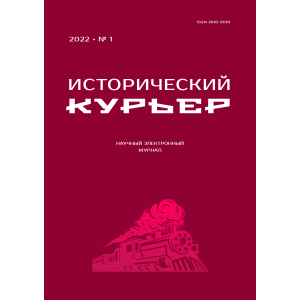In the last decade, the set phrases “historical memory”, “state policy of memory” have appeared in the information and scientific space. The discourse of memory, on the one hand, suggests that society needs to rethink, revise, reassess the historical past, but at the same time it also indicates that with the help of the historical past, the authorities are trying to consolidate society and build an identity for it.
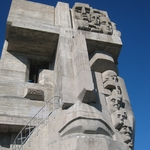 History and Memory: the Potential for Interaction
History and Memory: the Potential for Interaction
A.A. Krasilnikov
History and Memory in the Context of Political Interests
The interaction of professional historical science with the phenomenon of memory of the past has many facets. Memory acts as a space of conflicts and agreements not only within a professional historical corporation, but also a powerful influence on this sphere of state and political interests, which see the past as the most valuable resource for legitimizing power. A conflict is fixed between the goals of expanding scientific historical knowledge about the past and the changing state priorities in the field of memory policy, which are mainly of a mobilization nature.
Publishing: 28/02/2022
How to cite: Krasilnikov S.A. History and Memory in the Context of Political Interests // Historical Courier, 2022, No. 1 (21), pp. 9–21. [Available online: http://istkurier.ru/data/2022/ISTKURIER-2022-1-01.pdf]
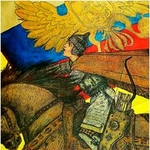 History and Memory: the Potential for Interaction
History and Memory: the Potential for Interaction
D.O. Nikulin
Struggling Against Myth-Creating in The Study of the First World War as an Answer to a Social Request
In recent years, interest in the First World War has increased; its lack of study in Soviet historiography has given historians the task of combating Soviet “mythology”: allegations of the predatory nature of the war, suppression of successful military operations, and so on. The article is devoted to the shortcomings of this struggle, expressed in the replacement of old historiographic myths with new ones, caused by the need of the state and society for a new identity. The author considers the deformation of historical knowledge under the influence of social demand of the current moment dangerous for historical science.
Publishing: 28/02/2022
How to cite: Nikulin D.O. Struggling Against Myth-Creating in The Study of the First World War as an Answer to a Social Request // Historical Courier, 2022, No. 1 (21), pp. 22–29. [Available online: http://istkurier.ru/data/2022/ISTKURIER-2022-1-02.pdf]
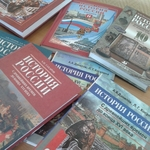 History and Memory: the Potential for Interaction
History and Memory: the Potential for Interaction
D.N. Moskalenskaya
Coverage of Soviet Repressive and Discriminatory Policies in Post‑Soviet School Textbooks
The article is devoted to the analysis of the changes that took place in the post-Soviet school history textbooks, in the subject of coverage of the Soviet repressive and discriminatory policies. It is shown that in the textbooks of recent years, the amount of material devoted to this topic has decreased compared to the editions of the 1990s – early 2000s. In addition, the latest publications are characterized by more cautious and restrained assessments of the events that took place.
Publishing: 28/02/2022
How to cite: Moskalenskaya D.N. Coverage of Soviet Repressive and Discriminatory Policies in Post‑Soviet School Textbooks // Historical Courier, 2022, No. 1 (21), pp. 30–38. [Available online: http://istkurier.ru/data/2022/ISTKURIER-2022-1-03.pdf]
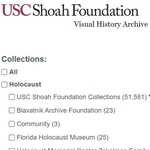 History and Memory: the Potential for Interaction
History and Memory: the Potential for Interaction
S.N. Ushakova
Collective and Individual Memory about the Events of the Russian and Soviet History in the Holocaust Collection of University of Southern California Shoah Foundation’s Visual History Archive
This review of the Holocaust collection of University of Southern California Shoah Foundation’s Visual History Archive contains a short history and numerical and thematic description of the collection. The focus of the review is video interviews of witnesses who share their memories about the events of the Russian and Soviet history. There are about 13.000 such interviews recorded primarily in the second half of the 1990s in almost 20 countries around the world. The review shows that the size and diversity of the collection as well as the indexing system developed and used by the archive makes this collection a valuable source for research on Russian and Soviet history of the 20th century.
Publishing: 28/02/2022
How to cite: Ushakova S.N. Collective and Individual Memory about the Events of the Russian and Soviet History in the Holocaust Collection of University of Southern California Shoah Foundation’s Visual History Archive // Historical Courier, 2022, No. 1 (21), pp. 39–44. [Available online: http://istkurier.ru/data/2022/ISTKURIER-2022-1-04.pdf]
 History and Memory: the Potential for Interaction
History and Memory: the Potential for Interaction
E.A. Erokhina
Institutes of Public Memory in the Discursive Space of Neotradition: The Novosibirsk Case
The article assesses the role of public memory institutions in the space of neo-tradition. Neo-tradition is understood as a way of gaining identity and a form of concern for the present and future, existing in the “grey zone” between myth and logos. The author draws an analogy between individual and collective structures of memory with the logos of historical science and mythological consciousness. Reflecting on the role of museums as institutions of public memory, their ability to transform heritage into a tool for mobilization and practical action is emphasized. The growth of private and public museum initiatives testifies to the need of modern man to “root” and comprehend history by non-rational means. It is concluded that the loss of the monopoly of historical science on understanding the past is due to the subordination of the social order of modern society to the imagination. On the example of two cases from Novosibirsk, it is shown how, in the discursive space of neo-tradition, heritage becomes a resource for social development.
Publishing: 28/02/2022
How to cite: Erokhina E.A. Institutes of Public Memory in the Discursive Space of Neotradition: The Novosibirsk Case // Historical Courier, 2022, No. 1 (21), pp. 45–54. [Available online: http://istkurier.ru/data/2022/ISTKURIER-2022-1-05.pdf]
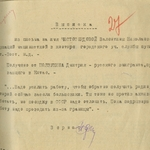 Memory and Oblivion
Memory and Oblivion
E.N. Nazemtseva
“Intercepted Fates”: Correspondence of Russian Emigrants in the Funds of the Central Archive of the FSB of Russia
The publication introduces into scientific circulation a complex of materials from the Central Archive of the Federal Security Service of Russia on the correspondence of Russian emigrants in China with their relatives and acquaintances in the USSR. Among the submitted documents are letters from emigrants and their relatives in the USSR, instructions from the Foreign Department of the United Main Political Directorate on perusal of letters, investigation of cases related to the transfer of letters to the USSR and China, illegal crossing of the Soviet-Chinese border, establishing control over the relatives of emigrants. The documents reflect in detail the features of life both in the USSR and in China. Of particular interest is information about the perception by emigrants of their new life away from their homeland, the culture of China, as well as documents revealing the perception of emigrants' relatives of the features of the Soviet system.
Publishing: 28/02/2022
How to cite: Nazemtseva E.N. “Intercepted Fates”: Correspondence of Russian Emigrants in the Funds of the Central Archive of the FSB of Russia // Historical Courier, 2022, No. 1 (21), pp. 55–71. [Available online: http://istkurier.ru/data/2022/ISTKURIER-2022-1-06.pdf]
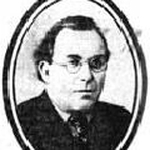 Memory and Oblivion
Memory and Oblivion
A.A. Kruzhalina
“The Beilis Case” in the Reflections of the “Jewish Soviet Intelligentsia” (on the materials of A. Kagan’s heritage)
The article deals with the most high-profile court case of the period of the late Russian Empire, the case of Mendel Beilis, based on the materials of the legacy of A.Ya. Kagan. The author of the article introduces into scientific circulation a little-known note by A.Ya. Kagan, submitted to the Prosecutor General of the USSR. Based on the note, as well as archival documents and eyewitness accounts, a description is given of the perception of the “Jewish question” by representatives of the Soviet creative intelligentsia of Jewish origin.
The author expresses gratitude to the Jewish Museum and Archive of the Interregional Public Organization “Federation of Jewish Organizations and Communities – Vaad (Council)” for providing access to historical sources of the A.Ya. Kagan Foundation.
Publishing: 28/02/2022
How to cite: Kruzhalina A.A. “The Beilis Case” in the Reflections of the “Jewish Soviet Intelligentsia” (on the materials of A. Kagan’s heritage) // Historical Courier, 2022, No. 1 (21), pp. 72–76. [Available online: http://istkurier.ru/data/2022/ISTKURIER-2022-1-07.pdf]
 Memory and Oblivion
Memory and Oblivion
V.A. Fisyukov
The Use of Techniques of Repressive Oblivion as an Example of the legitimization of the Exclusion of L.D. Trotsky from the VKP(b)
The article, using the example of L.D. Trotsky from the CPSU(b), considers the methods of discrediting the political image of the opponent. An analysis of the transcripts of the Joint Plenum of the Central Committee and the Central Control Commission of the All-Union Communist Party of Bolsheviks on October 21–23, 1927, materials of correspondence of various party members, polemical speeches by supporters of the majority faction and the opposition, as well as the grotesque depiction of the leaders of the latter in cartoons clearly demonstrates the transition from “selective” oblivion, that is, a completely natural process of selective memory of the events of the past, to “punishing” oblivion: the denial and falsification of “uncomfortable” episodes, the use of flexible interpretations.
Publishing: 28/02/2022
How to cite: Fisyukov V.A. The Use of Techniques of Repressive Oblivion as an Example of the legitimization of the Exclusion of L.D. Trotsky from the VKP(b) // Historical Courier, 2022, No. 1 (21), pp. 77–88. [Available online: http://istkurier.ru/data/2022/ISTKURIER-2022-1-08.pdf]
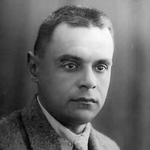 Memory and Oblivion
Memory and Oblivion
S.A. Papkov
Vivian Itin during the Party Purge of 1929: Another Step Towards Ruin
Vivian Itin during the Party Purge of 1929: Another Step Towards RuinThe publication reconstructs events from the life of the famous Siberian poet and writer, editor-in-chief of the “Sibirskiye ogni” magazine V.A. Itin, who accepted the Bolshevik regime during the Civil War and eventually became its victim. Such an episode in the writer’s career as the party purge of 1929 is considered in detail, during which compromising material was prepared for the final reprisal against him during the Great Terror. The content of the publication offers new information about the life path of V.I. Itin as a representative of the first generation of Soviet cultural figners in Siberia. At the same time, this also serves as an illustration of the peculiarities of social and political life in Soviet Russia at the turn of the 1920s–1930s.
Publishing: 28/02/2022
How to cite: Papkov S.A. Vivian Itin during the Party Purge of 1929: Another Step Towards Ruin // Historical Courier, 2022, No. 1 (21), pp. 89–97. [Available online: http://istkurier.ru/data/2022/ISTKURIER-2022-1-09.pdf]
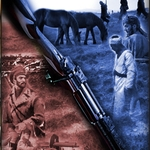 Memory and Oblivion
Memory and Oblivion
T.K. Allaniyazov
The History of Armed Uprisings and Rebel Movements in 1929–1931 in Kazakhstan in the Latest Studies (2001–2021)
The article analyzes studies and publications of 2001–2021 on the history of armed uprisings and rebel movements of 1929–1931 in Kazakhstan. The significance of the works under consideration for the development of the historiography of the problem is shown and its qualitative characteristics are determined. The approaches of researchers to the nature of the armed uprisings and rebel movements of 1929–1931 are revealed. As a result of the study, it is noted that the available literature did not form a complete scientific picture of the history of armed uprisings and rebel movements in 1929–1931 in Kazakhstan.
The article was prepared within the framework of the project OR 11465470 “Mass Political Repression in Kazakhstan in the 20–50s of the 20th Century and Rehabilitation Processes: Creation of a Unified Database” with the financial support of the Ministry of Education and Science of the Republic of Kazakhstan.
Publishing: 28/02/2022
How to cite: Allaniyazov T.K. The History of Armed Uprisings and Rebel Movements in 1929–1931 in Kazakhstan in the Latest Studies (2001–2021) // Historical Courier, 2022, No. 1 (21), pp. 98–115. [Available online: http://istkurier.ru/data/2022/ISTKURIER-2022-1-10.pdf]
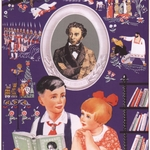 Memory and Oblivion
Memory and Oblivion
M.Yu. Shmatov
The Mobilized Past: the Memory Policy and Its Perception in Ideological Campaigns in Western Siberia (1934–1939)
The article deals with the problems of historical memory in the Soviet ideology of the 1930s. The paper reveals the most important ideological images of the past, the nature and purpose of their use. Conclusions are drawn about the relationship of the historical constructs of the Bolsheviks with their policy of mass mobilization campaigns. The correlation of officially declared images of the past with its perception by ordinary Soviet citizens is revealed, in connection with which the conclusion is made about ‘memory conflicts’ between official and unofficial narratives.
Publishing: 28/02/2022
How to cite: Shmatov M.Yu. The Mobilized Past: the Memory Policy and Its Perception in Ideological Campaigns in Western Siberia (1934–1939) // Historical Courier, 2022, No. 1 (21), pp. 116–123. [Available online: http://istkurier.ru/data/2022/ISTKURIER-2022-1-11.pdf]
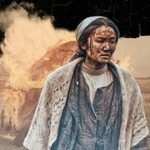 Memory and Oblivion
Memory and Oblivion
A.D. Derendyaeva
The Famine of the 1930s in the Kazak (Kazakh) ASSR: Influence of Modern Cinema on the Identity Construction
The article investigates modern feature and documentary films, dedicated to one of the collective traumas of the 20th century, the Famine of the 1930s in the Kazakh ASSR. Analyzing the main plots and using comparative approach, the author identifies key markers of identity reflected in the films: 1) “love for the motherland”; 2) “natural conditions”; 3) “image of an enemy”; 4) “image of a hero”; 5) “collective behavior”; 6) “features of national culture”; 7) “sites of commemoration”. The study allows us to conclude that cinema is one of the tools of identity politics and politics of memory in Kazakhstan.
Publishing: 28/02/2022
How to cite: Derendyaeva A.D. The Famine of the 1930s in the Kazak (Kazakh) ASSR: Influence of Modern Cinema on the Identity Construction // Historical Courier, 2022, No. 1 (21), pp. 124–132. [Available online: http://istkurier.ru/data/2022/ISTKURIER-2022-1-12.pdf]
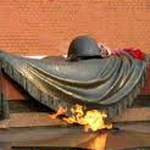 Memory and Oblivion
Memory and Oblivion
A.S. Zhanbosinova
Historical Memory of the Great Patriotic War in the Space of Kazakhstan
The article deals with the formation of historical memory of the Great Patriotic War in Kazakhstan. Memory studies is one of the most successfully developing research areas in the scientific and humanitarian space. The author believes that, in combination with political restructuring and the parade of sovereignties, there was a radical reloading of the scientific paradigm in the post-Soviet space, “a change in discursive formations” and “the will to knowledge” led to criticism and objectivity of research practices in the focus of historical memory. Commemorative practices are revealed and their content is analyzed. It is shown that the official state policy on the formation of historical memory of the Great Patriotic War has framework parameters and does not contradict the content of collective memory.
Publishing: 28/02/2022
How to cite: Zhanbosinova A.S. Historical Memory of the Great Patriotic War in the Space of Kazakhstan // Historical Courier, 2022, No. 1 (21), pp. 133–144. [Available online: http://istkurier.ru/data/2022/ISTKURIER-2022-1-13.pdf]
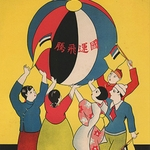 Memory and Oblivion
Memory and Oblivion
S.V. Smirnov
I.I. and A.N. Serebrennikov in the Construction of “New Order” in East Asia
The article examines the participation of Russian emigration in the construction of a “new order” in East Asia, carried out by Japan in the second half of the 1930s – 1945, using the example of orientalist activities of the Serebrennikovs in Tianjin. One of the main tasks of Russian emigration in the construction of the “new order” was its cultural rapprochement with the East Asian peoples, which led to a serious surge of educational and orientalist activity in the pages of the emigrant press and in the activities of various emigrant associations.
Publishing: 28/02/2022
How to cite: Smirnov S.V. I.I. and A.N. Serebrennikov in the Construction of “New Order” in East Asia // Historical Courier, 2022, No. 1 (21), pp. 145–153. [Available online: http://istkurier.ru/data/2022/ISTKURIER-2022-1-14.pdf]
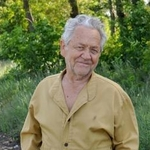 Memory and Oblivion
Memory and Oblivion
I.V. Rebrova
Memory Sites of 214 Children with Disabilities from the Yeysk Orphanage: an Oral History Interview with an Eyewitness of the 1942 Crime
The article is a publication of an oral interview with Vladimir Akimovich Rudenchenko, which was recorded by the author in May 2018 in the city of Yeisk as part of the project “Remember us…”. The central plot of the interview is a story about the now-lost original burial place of 214 children with disabilities – pupils of the Yeysk orphanage Kreiso, who were killed by members of Sonderkommando 10a of Einsatzgruppe D on October 9–10, 1942.
Funding: The research was funded by RFBR and Novosibirsk region, project number 19-39-90057.
Publishing: 28/02/2022
How to cite: Rebrova I.V. Memory Sites of 214 Children with Disabilities from the Yeysk Orphanage: an Oral History Interview with an Eyewitness of the 1942 Crime // Historical Courier, 2022, No. 1 (21), pp. 154–171. [Available online: http://istkurier.ru/data/2022/ISTKURIER-2022-1-15.pdf]
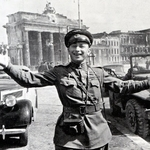 Memory and Oblivion
Memory and Oblivion
A.V. Vlasov
The Search for One’s Own Identity: Communicative and Cultural Memory in the Memoirs of Employees of the Soviet Military Administration in Germany
This article presents an analysis of the features of articulation of the identity of employees of the Soviet military administration in Germany within the framework of communicative and cultural memory. This study was conducted on the basis of personal sources (memoirs, diaries and interviews) created by the employees themselves after their service or work in the administration. The results of the process of creating these sources are also presented as an example of transformation of communicative memory into cultural memory.
Publishing: 28/02/2022
How to cite: Vlasov A.V. The Search for One’s Own Identity: Communicative and Cultural Memory in the Memoirs of Employees of the Soviet Military Administration in Germany // Historical Courier, 2022, No. 1 (21), pp. 172–183. [Available online: http://istkurier.ru/data/2022/ISTKURIER-2022-1-16.pdf]
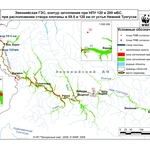 Open Archives
Open Archives
A.M. Ablazhey, N.N. Ablazhey
Evenki Hydroelectric Power Station: “For” and “Against” (to the History of the Debates on This Mega-Project)
The documentary publication presents a transcript of public hearings on the discussion of the preliminary version of the EIA (“Environmental Impact Assessment”) for the project for the construction of a hydroelectric power station on the river Lower Tunguska in the Evenk municipal district of the Krasnoyarsk Territory. In the case of the Evenk hydroelectric power station, which became the reincarnation of the Soviet project for the construction of the Turukhanskaya station, all this would have been extremely large-scale, given the specific natural conditions, established economic practices and the ethnic structure of the population. There is an opportunity to compare the organization and main trends in the public discussion of the project, as it happened in the late Soviet and post-Soviet stages. Some experts strongly opposed the construction of the station, citing primarily environmental and humanitarian risks as arguments (primarily from the point of view of the interests of the indigenous population of the territory). Others, based also on environmental considerations, expressed the exact opposite opinion. The outcome of the public hearings was the clearly expressed opinion of the population, including the leadership of the district, about the categorical rejection of idea of building the Evenk hydroelectric power station.
Publishing: 28/02/2022
How to cite: Ablazhey A.M., Ablazhey N.N. Evenki Hydroelectric Power Station: “For” and “Against” (to the History of the Debates on This Mega-Project) // Historical Courier, 2022, No. 1 (21), pp. 184–216. [Available online: http://istkurier.ru/data/2022/ISTKURIER-2022-1-17.pdf]
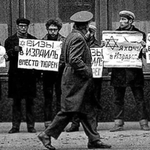 Open Archives
Open Archives
E.N. Kryakin
“Jews in the Soviet Union to Be!” The Problem of Choosing the Path of Life of Soviet Jewry in the Years of Late Perestroika
Since 1968, Jews have been able to leave the USSR as part of repatriation to Israel. The restrictions imposed on this process made it impossible to repatriate the entire Jewish population of the USSR. In 1976, M. A. Chlenov voiced the idea of the possibility of developing an independent Jewish culture in dialogue with the Soviet authorities. In the 1970s, this idea seemed a little achievable, but the political shifts after 1985 revived the frozen processes of independent national life. Soviet Jews got the opportunity to develop their culture outside of repatriation, the opportunity to remain Jews while remaining in the Soviet Union. The article shows that this was not a consequence of the assimilation of Soviet Jewry, but Aliya was not perceived as the only possible option for the development of Jewish life.
The collection of archival materials was carried out during the author's work in the framework of the research seminar “Jews of Stagnation and Fracture (1971–1992)”, organized by the Jewish Museum and the Tolerance Center in 2021.
Publishing: 28/02/2022
How to cite: Kryakin E.N. “Jews in the Soviet Union to Be!” The Problem of Choosing the Path of Life of Soviet Jewry in the Years of Late Perestroika // Historical Courier, 2022, No. 1 (21), pp. 217–225. [Available online: http://istkurier.ru/data/2022/ISTKURIER-2022-1-18.pdf]
 Open Archives
Open Archives
S.S. Padalko
The Material Jewish Heritage of Krasnodar
The article deals with cultural monuments that can be classified as the Jewish heritage of the city of Krasnodar. It is shown how these objects are included in the context of the formation of Jewish group identity and how they fall under the protection of the law.
The study was conducted within the framework of the scholarship program of the Research Center of the Private Cultural Institution “Jewish Museum and Tolerance Center” (Moscow) with the financial support of A.I. Klyachin.
Publishing: 28/02/2022
How to cite: Padalko S.S. The Material Jewish Heritage of Krasnodar // Historical Courier, 2022, No. 1 (21), pp. 226–232. [Available online: http://istkurier.ru/data/2022/ISTKURIER-2022-1-19.pdf]



